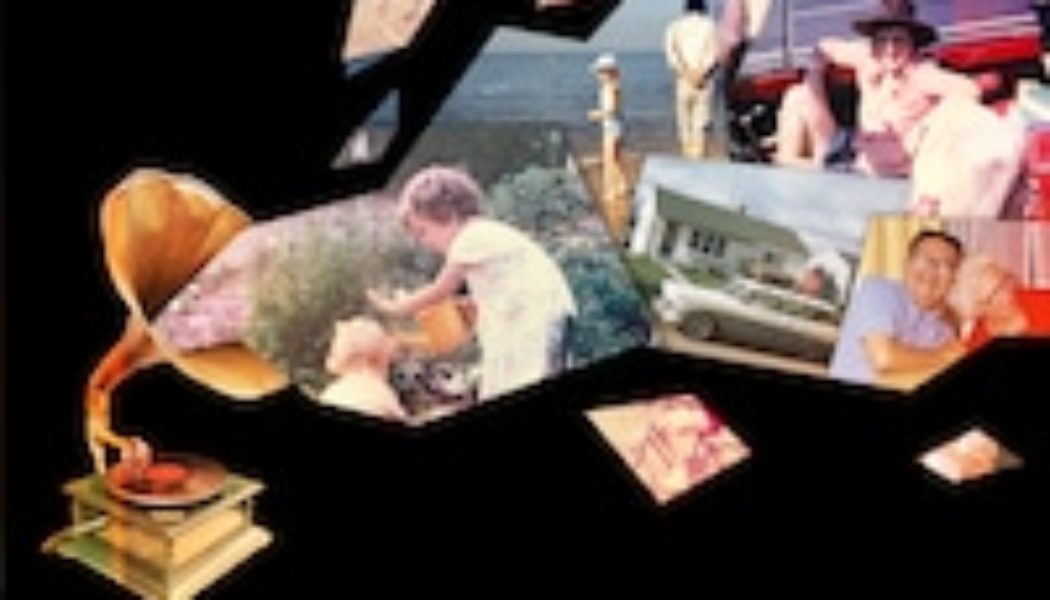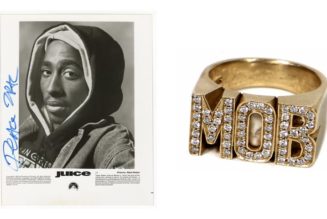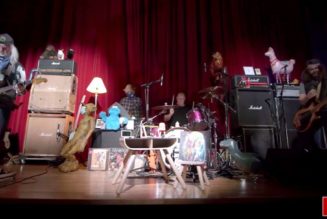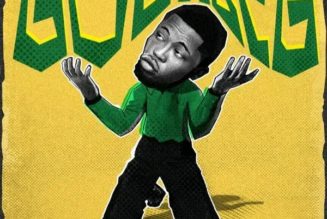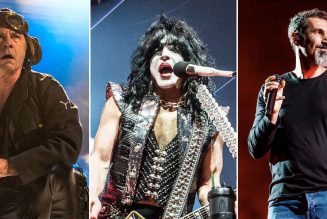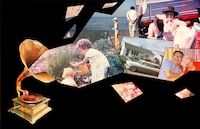
When Laura Nye Falsone’s first child was born in 1996, the Wallflowers album “Bringing Down the Horse” was a big hit. “All I have to hear are the first notes from ‘One Headlight,’ and I am back to dancing … with my brand-new baby boy in my arms,” she says. “It fills my heart with joy every time”
When Carol Howard’s early-onset Alzheimer’s worsened, often she couldn’t recognize her husband. She once introduced him as her father. But if she heard a 1960s Simon & Garfunkel song playing, Howard, a marine biologist who died in 2019, could sing every word “effortlessly,” her husband says.
This ability of music to conjure up vivid memories is a phenomenon well known to brain researchers. It can trigger vivid memories from years past — for many, more strongly than other senses such as taste and smell — and provoke strong emotions from those earlier experiences.
“Music can open forgotten doors to your memory,” says Andrew Budson, chief of cognitive and behavioral neurology, associate chief of staff for education and director of the Center for Translational Cognitive Neuroscience at Veterans Affairs Boston Healthcare System.
“Music can take you back in time, as well as act like a jolt of electricity that can fire up your brain and get it going,” he says. “We all have the familiar experience of going back to our hometown, visiting our high school and feeling the memories come flooding back. Music can do same thing. It provides an auditory and emotional setting that allows us to retrieve all those memories.”
Scientists who study music’s powerful effects on the brain say that growing knowledge could improve therapy for such conditions as dementia and other memory disorders, anxiety, stress and depression, learning disabilities and many physical illnesses, such as chronic pain, cancer and Parkinson’s disease.
Evidence also exists that music prompts the secretion of brain neurotransmitters, such as dopamine, a chemical messenger that plays a role in the brain’s reward/pleasure system. Other studies have shown that music reduces the stress-producing hormone cortisol and increases the secretion of oxytocin, which plays a role in labor and childbirth, as well as in infant-parental bonding, trust and romantic attachment.
“Music activates different parts of the brain,” making it an especially versatile tool, says Amy Belfi, assistant professor of psychological science at Missouri University of Science and Technology and principal investigator in its Music Cognition and Aesthetics Lab. “We can use it to improve mood, to help us learn, to socially bond with other people. It becomes part of our identity, like the soundtrack of our lives, which explains why it is so effective in stimulating and retrieving memories.”
Some experts also see a role for music — which can ease agitation in those with dementia — as an alternative to sedating medications, for example, or as a means of enabling patients to keep living at home.
Frank Russo, professor of psychology at Toronto Metropolitan University, says he believes this ultimately will be possible. He is chief scientific officer of a company that is developing a music player that uses artificial intelligence to curate an individualized play list designed to guide a patient from a state of anxiety to one of calm.
“One of the really challenging things for caregivers is the anxiety and agitation,” says Russo, whose research focuses on the intersection of neuroscience and music. “A good chunk of people will end up in those care homes, where they resort to sedatives or antipsychotics. Music has a real opportunity here.”
Melissa Owens, a music therapist at Virginia Commonwealth University Health, already has seen this in her work. “I still find myself in awe of music’s ability to positively change behavior, emotion and even the relationship between a caregiver and their loved one, if even only for the duration of the specific song,” she says. It provides “a moment of normalcy which so much of the time seems lost.”
To understand music’s effect on the brain, experts look at the different types of memory involved.
For instance, when we perform music, rather than just listen to it, we use “procedural” memory, a type of long-term “implicit” memory, which is the unconscious ability to remember a habit or routine that we can do every day without thinking about it, such as touch typing, riding a bike or brushing our teeth, researchers say.
This differs from “episodic” memory, a type of long-term “explicit” memory, which is a conscious recollection and is what your brain uses to remember — for example, the items on your shopping list. (Both implicit and explicit are types of long-term memory — the first unconscious and effortless, the second requiring conscious work to remember.)
Episodic memory originates in the brain’s hippocampus region, which “is the first to go” when dementia hits, Budson says.
“Alzheimer’s attacks the hippocampus first and foremost,” he says, explaining why procedural memory still enables dementia patients to remember lyrics and perform. “It’s a completely different memory system,” he says.
In those with healthy brains, “episodic memory allows you to be transported back in time” to a specific past event or time period “when you listen to a piece of music” Budson says, while the ability to sing or make music is procedural memory, meaning you don’t have to deliberately think about what you’re doing. A well-known recent example has been that of legendary singer Tony Bennett, 96, who in the throes of Alzheimer’s could still flawlessly perform his classic hits.
He says, however, that patients with Alzheimer’s still can experience the music “time travel” episodic memory phenomenon even after the disease has attacked their hippocampus, as long as those episodic memories are more than two years old. “They have been ‘consolidated,’ and once consolidated, they can be accessed even though the hippocampus has been destroyed,” says Budson, who also is a professor of neurology at Boston University.
“The consolidation process begins as soon as the first night we sleep after a memory is formed, and may take up to two years,” Budson explains. “When a memory forms, it is not stored in the hippocampus directly. The different aspects of a memory — the sights, sounds, smells, emotions and thoughts — are represented by a pattern of neural activity in different parts of the cortex, the outer surface of the brain, where the seeing, hearing, smelling, emoting and thinking is taking place.”
To grasp the concept, he says, think of memories as little balloons floating in different areas of the brain.
“When a new memory is formed, it is as if the hippocampus is tying together the strings of the balloons, just like if you would hold the strings of helium balloons in your hand,” he says. “If the hippocampus was destroyed, the balloons would separate and fly away and the memory would be gone.”
But after the memory is consolidated, he says, “the different balloons become linked directly to each other through heavy cords and because of this the hippocampus is no longer needed for the memory to remain intact. This is why people with Alzheimer’s disease can recall stuff from their childhood but not remember what they had for lunch or who they saw yesterday.”
When someone hears a piece of music from their youth, the “time machine” effect is something “everyone can relate to,” Russo says. “I was in high school in the 1980s and today, when I hear a song from Blondie or Depeche Mode, I have that feeling of being out with my friends, on my own, independent from my parents, when I was first starting to feel like an adult — it’s really powerful.”
He adds, “we don’t just hear a song once. There are lots of opportunities to encode that memory. Deeply encoded music can unlock these ‘flashbulb’ memories. We can remember more vivid details about events in the past when we are exposed to music.” Research has shown that effect is more so than with familiar faces or other stimuli.
Belfi has conducted research specifically on this. In one small study, 30 participants listened to 15-second excerpts from music that was popular when they were younger — ages 15 to 30. After hearing the clips, they saw photos of famous people’s faces from the same time period, including politicians, athletes and movie stars — but no musicians, to avoid confusion.
The scientists asked participants about each stimulus and to describe any “autobiographical” memories inspired by the exposure. “The music prompted much more detailed memories than the faces,” she says. “We found from this study that music tends to be associated with personal memories from life.”
In another small study, she says she had participants — 39 young adults ages 18 to 34 and 39 older adults ages 60 to 77 — keep diaries over a four-day period recording their responses to both music they heard and food they ate, cooked, saw in supermarkets and viewed on a baking program.
“Music triggered more frequent autobiographical memories, a greater proportion of involuntary memories, and memories rated as more personally important in comparison to food cues,” she says.
This wouldn’t surprise Falsone, a lab manager at the Smithsonian Environmental Research Center. The “baby boy” she danced with in her arms is now 26, and she has two more sons and a daughter. . Her children have all heard her “Wallflowers” story.
“If I mention it, they all roll their eyes and go, ‘Yes Mom, we know. You like this song.’” she says, “But they smile.”
